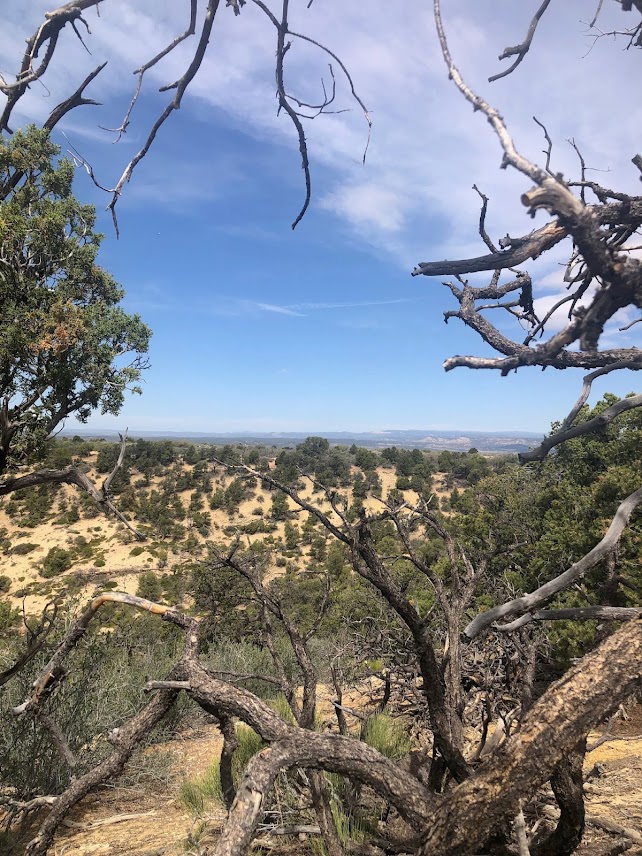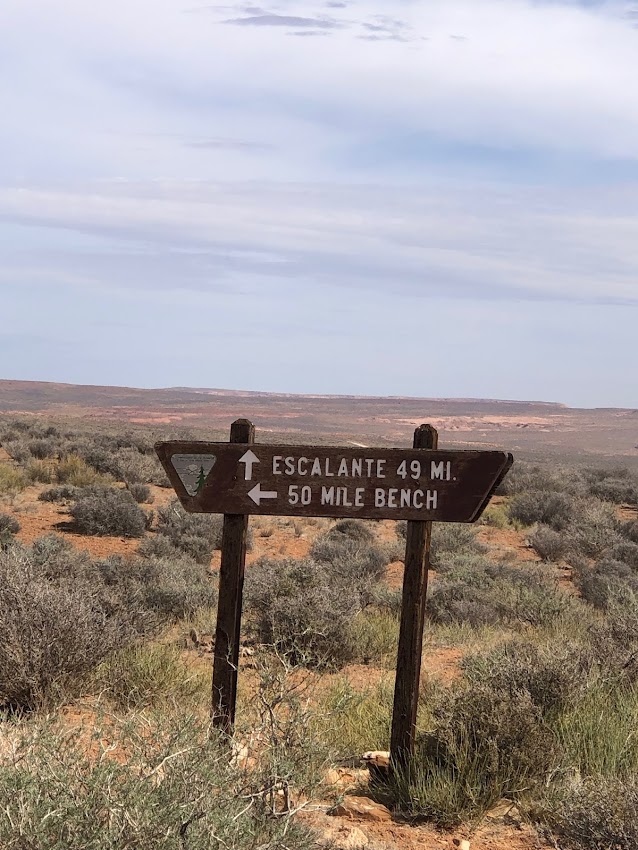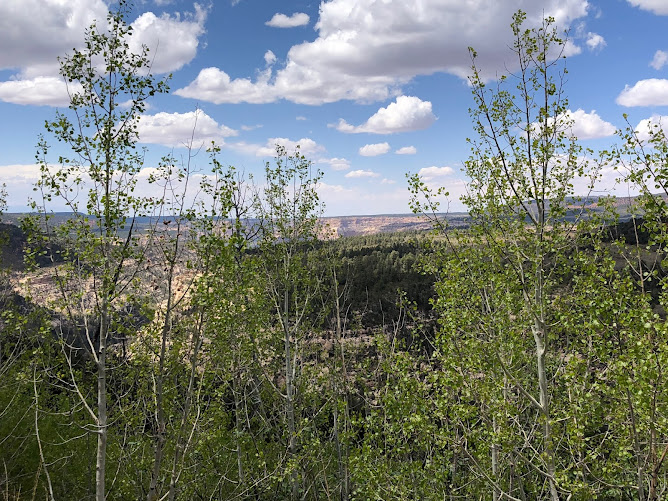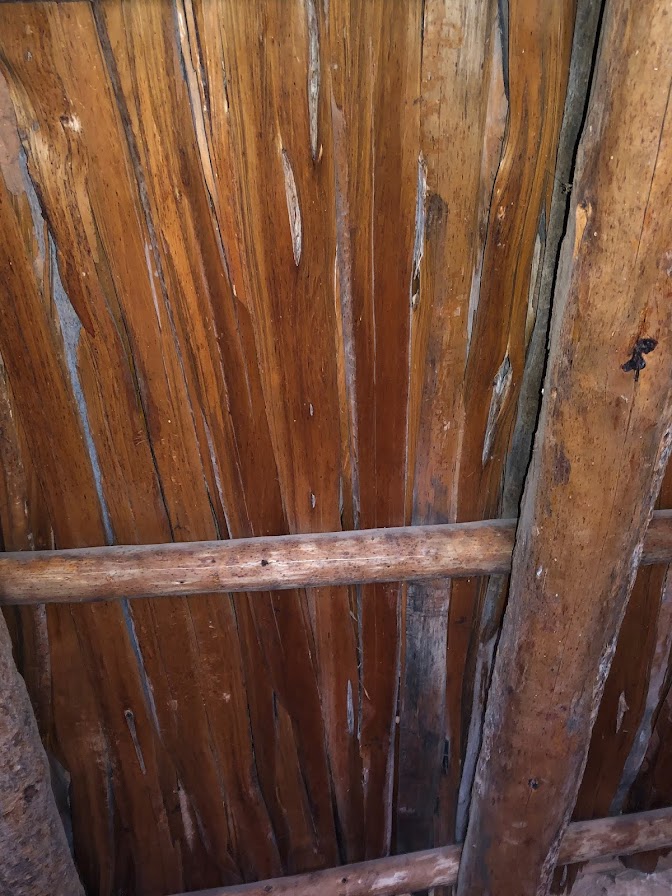In May 2021, I joined with several other off-roaders and explored Southern Utah. Our great America offers so many incredible sights to see!
Itinerary: Grand Staircase Escalante, Glen Canyon National Recreation Area, Dark Canyon, Dry Mesa, and Capital Reef National Park (a drive through). It also included the Smoky Mountain Trail, 50 Mile Bench Mountain, and the Left Hand Collet.
Dates: May 11th to May 20th
Number of Days: 10
Total miles traveled (portal to portal): 1800+
Miles off-road (dirt): 400+
Number of Vehicles: 5
Number of people: 6
First, I want to thank Dave our Trail Master, for all the planning and logistics that made this trip a success. I also want to thank the rest of our group for all the great food and friendship!
Our trip started with an unexpected detour to an off-road shop to get my rear shocks replaced. I did a thorough maintenance check of my FJ including the suspension before I left. My rear shocks were not leaking, corroded, or in need of replacing. But it turns out that when you put four 5 gallon gas cans on the roof, two 4 gallon gas cans on the rear bumper and 10 days worth of camping gear, the shocks revolt! I noticed the FJ was swaying more than usual on the S turns on route 15 going into Saint George, Utah.
Luckily, one of our group knew of an off-road shop in Saint George called Dixie 4 Wheel Drive. I can't say enough about Dixie 4 Wheel Drive, they are family owned and were able to replace my rear shocks in a couple of hours. If you ever need work done on your vehicle in and around Saint George or Moab please visit them.
Dixie 4 Wheel Drive website.
After leaving Dixie 4 Wheel Drive, we drove to Glen Canyon National Recreational Area - Alstrom Point, where we spent 2 days.
Alstrom Point
Alstrom Point overlooks Lake Powell with specular views of the Lake. Because Alstrom Point is only reachable with a 4WD vehicle you can enjoy the Lake views without crowds.
The rock formation in the first picture is called "Gun Site Butte". It looks like the gun site of an old rifle, complete with notch.
Campsite
Some of the wildlife around Alstrom Point.
Grand Staircase EscalanteDescription from BLM website:
"Grand Staircase-Escalante National Monument spans across nearly one million acres of America's public lands and contains three distinct units: Grand Staircase, Kaiparowits, and Escalante Canyon. From its spectacular Grand Staircase of cliffs and terraces, across the rugged Kaiparowits Plateau to the wonders of the Escalante River Canyons, the Monument is a diverse geologic treasure speckled with monoliths, slot canyons, natural bridges, and arches. Due to its remote location and rugged landscape, the monument was one of the last places in the continental United States to be mapped."
Views along the way to Deer Springs Point.


On our way to Deer Springs point we explored Grosvenor Arch.
Grosvenor Arch
Description from Utah Life website:
"Grosvenor Arch is unique with its double arch. And this massive sandstone formation looks like a castle from a children’s cartoon from afar. It is tall and commands respect.
The closer you get to the arch, the more inspiring the place becomes. Because the .25-mile trail to the base of the arch is paved, it is handicap accessible. You walk through a sage field to the base, and as you near, you will likely hear the large birds who call the area home. Feel free to follow an unmarked trail (you’ll see footprints) after the pavement ends; it will lead you to the top of the ridge in close proximity and almost equal in height to the arch. Here, your vantage of the surrounding area will be expansive and scenic.
Grosvenor Arch makes for an excellent place to stop en route to other area attractions, but it is also great to stay awhile. With relatively few visitors as compared to other spots, you might just have this majestic place to yourself for awhile."



Open Range Cattle
After Grosvenor, we ate lunch in this beautiful campground.
Deer Springs Point - Grand Staircase Escalante
Deer Springs Point was another awesome location. The trial heads toward a point but stops well before the point. There is an "end of trail sign" but over the years the the trail has been extended past this point and we set up camp at the very end of the trail.
The trail wandered around Pinyon Pines and Junipers and some places got very narrow. The trail was so narrow in spots that one member of our group lost his side mirror to a tree branch, others had damage to their antennas. Needless to say, every vehicle received a new dose of pin striping.
Our campsite was among dense Pinyon Pines and Juniper forests.
Our trail leader Dave decided to do some trail maintenance going into our campsite with his Hummer. He snagged this low hanging tree branch on his roof rack. Nothing was damaged except for the tree branch.
Deer Springs Campsite.
Trail into and out of Deer Springs Point.
From Deer Springs point we headed to Timber Mountain.
Timber Mountain - Grand Staircase Escalante
The terrain, ecosystems, soil and elevations are very diverse, vast and ever changing in the Grand Staircase Escalante. Timber Mountain is a prefect example of this. From the Pinion Pines and Junipers of Deer Point to the beach-like sand of Timber Mountain.
The last mile of the trail included a very steep section of deep sand that required multiple attempts by two of our group to climb. The sand was so fine that our normal tent stakes were useless, but fortunately one of our group had extra long stakes that worked.
Timber Mountain is open range and on the way we found a Cowhands Cabin along with corrals.
We spent two days here enjoying the scenery and beautiful views.
View from our dining table.
Leaving Timber Mountain we headed to 50 Mile Bench Mountain.
Along the way we drove the Smoky Mountain Trail and Left Hand Collet roads.
Smoky Mountain Trail
Below is the trail we drove to reach Smoke Mountain Trail.
Leaving Smoke Mountain Trail we drove the Left Hand Collet Road. As you can see from the pictures, we drove along a canyon floor crossing a stream numerous times and even driving in the stream. This was another one of the diverse ecosystems we encountered.
Our Wile Coyote Moment....this precarious bolder looked like it could fall at anytime, but it had probably been sitting there for more than a thousand years!

Next, our route took us down Hole-in-the-Rock Road. This 49 mile drive (one way) runs from Escalante Utah to the Hole-in-the-Rock and is one of the worst washboard roads I've been on. It tested our suspensions and overall vehicle condition and reliability.
We did not go to Hole-in-the-Rock but passed by the entrance on our way to 50 Mile Bench Road.
Here is an excerpt from Utah's History Encyclopedia that describes the Hole-in-the-Rock Mormon mission. Website Utah History Encyclopedia.
"Built by Mormon pioneers answering a mission call to colonize the southeastern section of the territory, the trail provided a crucial link for one year before the most rugged stretches were bypassed with the opening of Hall's Crossing."
"For six weeks, the men labored on a wagon road down the sandstone cliffs to the Colorado river. Built by chiseling and blasting a path through a steep crevice named the Hole-in-the-Rock, leveling high spots, filling depressions, and widening crevice walls. To avoid the steep grades near the bottom of the Hole-in-the-Rock, the pioneers tacked their road onto the face of the north wall of the crevice. The tacked-on road was supported by oak stakes secured into holes drilled into the crevice wall at two-foot intervals"
Hole-in-the-Rock Road.
50 Mile Bench Road
Some of the incredible views from our campsite.
Cooking Breakfast.
View heading back down 50 Mile Bench Road to our next campsite Dry Mesa.Dry Mesa / Bears Ears National Monument / Manti La Sal National Forest
All of these areas are contiguous with each other. Again we experienced different ecosystems and amazing scenery.
We spent 3 days at Dry Mesa.
Campsite.
Even though we didn't see any bears or see any evidence of them, we thought it would be prudent to put our trash out of reach.
Surrounding area.
On our second day at Dry Mesa we traveled about 15 miles up to the Bears Ears National Monument through the Manti La-Sal National Forest to near the end of Dry Mesa to visit the Doll House Ruins.
Some of the views along the way.
Because of the drought in the Southwest, the road to the ruins kicked up a very fine red dust that seemed to get everywhere.
The Doll House Ruin is located in the Bears Ears National Monument. The ruin is located in a shallow alcove near the rim in a section of Wooden Shoe Canyon. The Doll House ruin is near perfect and has been standing for about 800 years.
Seeing the Doll House ruin was a real treat, it is rare that you can walk right up to a ruin, walk around, look inside and take close up pictures.
The ruins are a short 1/4 mile hike down a switchback trail from the parking area.
Our first glimpse from the trail through the trees of the Doll House.
Back wall inside ruin.
Celling.
Back of Doll House with wood beam supports.
Adjacent alcove with fire soot on roof and evidence of early inhabitants.
And finally some of the wildflowers we observed at our various locations throughout the trip.
Thanks for viewing my trip report to southern Utah. I hope you enjoyed it.
Phil




















































































No comments:
Post a Comment